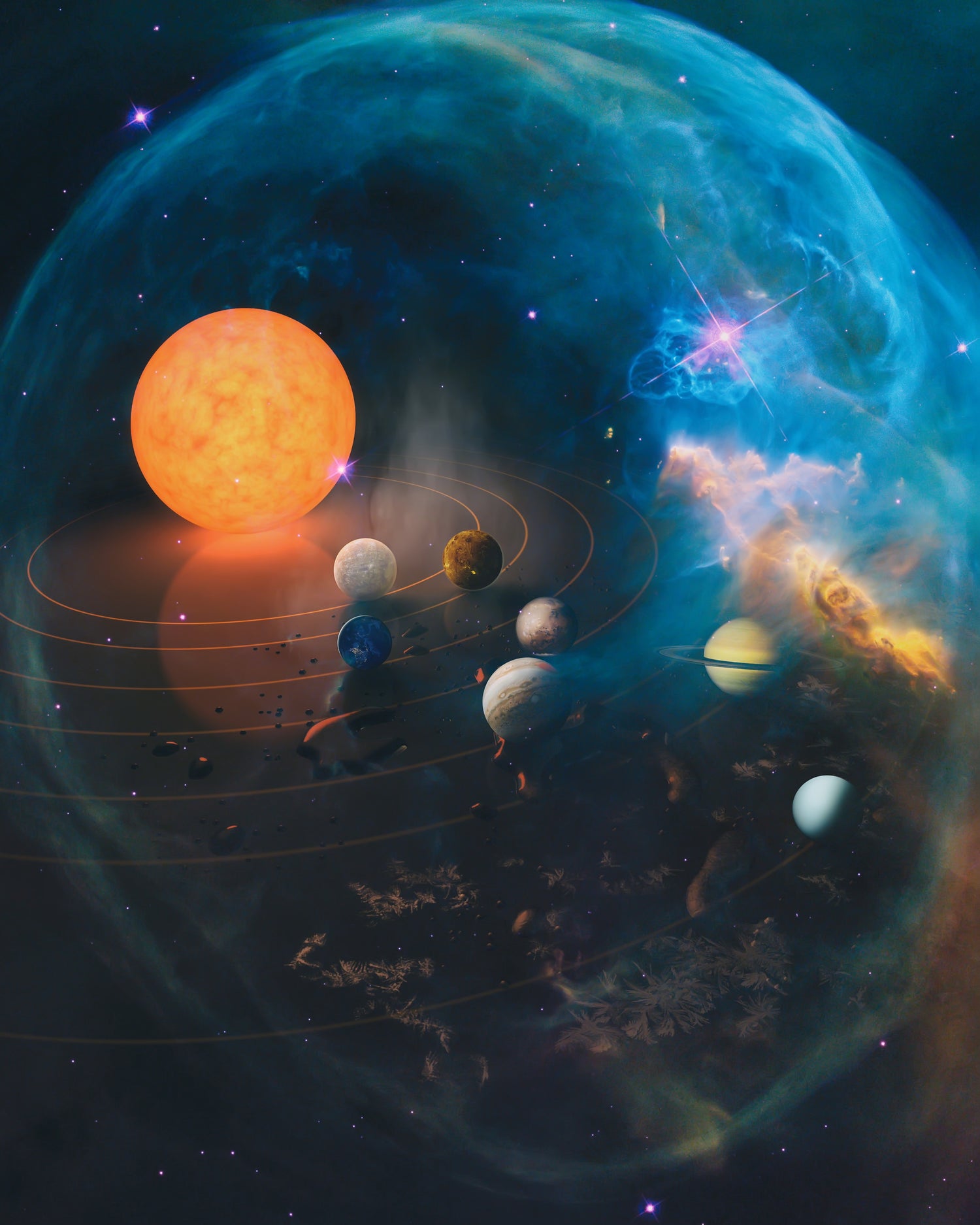Theme: Heliocentrism & Copernicus
Let's talk about our Solar theme, which covers the topic of the great polymath/astronomer Copernicus and his influential theory called Heliocentrism.

Geocentrism vs Heliocentrism
Nicolas Copernicus, a Polish astronomer and polymath, is said to have been horribly persecuted by the church for not toeing the line when it came to contemporary religious beliefs about how the Universe was created.
It had been believed for so many years that everything centered around humans—around mankind—and thus it was obvious to even the greatest dullard that the Universe spun around the Earth. Geo and kentrikos were the Greek words for “Earth” and “of the center”, respectively, giving us the word geocentric.
The odd thing is, most people were not terribly shocked to hear about Copernicus' theory about Heliocentrism in a book published in 1543. The idea had been proposed before, but Copernicus’ model was the best treatment of the idea.
Indeed, as one of the biggest supporters of scientific investigation, the church was right behind him, in full support of the revelation by this respected, canonical scientist. In fact, his discoveries were taught to other scientists through the churches. So why does history get this part about how the universe "works" so wrong?
Where did Geocentrism come from?
It was actually a text called the Almagest published in the 2nd century by a well-known name in astronomy, Claudius Ptolemy, that popularized geocentrism, and it is certainly not hard to see why. His other discoveries and revelations carried a lot of weight, practically defining astronomy. He was an excellent observer, and resultantly, people took what he said quite seriously. Thus his declaration went unquestioned for centuries.
Look up in the sky—even over the course of a few minutes—and you can detect “motion” as the “unchanging” sky passes over your head. Clearly you are not moving as you casually relax on the grass, so it must be the sky, or so our senses tell us.
However, nothing in the Universe has absolute motion—not one single atom! All motion is relative to its own space-time framework. To someone on a planet, the planet’s intrinsic motion doesn’t stand out—it is the standard against which all other things in the vicinity are measured. It’s the planetary rotation that gives the stars their apparent motion, because we regard the planet as being “still”.
The truth is that Earth revolves on its own axis, as well as oscillating slightly around its barycenter, the balance point between the Earth’s and Moon’s gravity, as well as orbiting the Sun, which in turn orbits the Milky Way, which moves relative to the Local Galactic Cluster, which moves relative the Local Supercluster of Galaxies, and so on, ad nauseum.

Finding the explanation
These events made it pretty apparent that “the firmament” or “Vault of Heaven” wasn’t so firm after all. Ptolemy’s writing convinced people for centuries that the Earth was the center of the Universe, but the mathematical lengths astrologers and astronomers had to go to in order to explain how those planets circled Earth was insanely complicated.
In logic/philosophy there is a concept often referred to as Occam’s Razor. It tells us that an extremely complicated explanation is very likely to be wrong if there is a simpler one available. Copernicus found the simpler one. It was incredibly elegant, and explained all the peculiarities you could see with your own eyes.
Retrograde planets which appear to go backwards do this either because they are closer to the Sun, and pass us in their smaller, faster orbits, or because they are farther from the Sun, and we pass them in Earth’s faster orbit. With the Sun at the center, suddenly everything made sense.
Mercury takes 88 days to orbit the Sun; Venus, 225 days; Earth takes 365 days; and Mars, 687 days. The rest are measured in decades, and even centuries. To the measuring capabilities available at the time, everything matched up perfectly.
In the end
What we do know is that the Universe is about 14 billion years old, so the maximum width should be about 28 billion light-years in any direction. Of course we now know that the Universe is also expanding, so the distance between objects is increasing, too. The further you are from the object, the faster it moves away from you.
This happens to such an extent that the effective speed of expansion turns out to be faster than the speed of light, so we think the edge is probably 45-47 light-years away in every direction, or about 93 billion light-years in diameter.
The overall size of the Observable Universe is a matter of debate, including figures up to 124 billion light-years. Whichever is the case, stars beyond that point are expanding away from us faster than the speed of light, so that light can never reach us. Beyond that, the Universe may be infinite or just a slightly larger sphere holding everything that was part of our original Big Bang Singularity.
